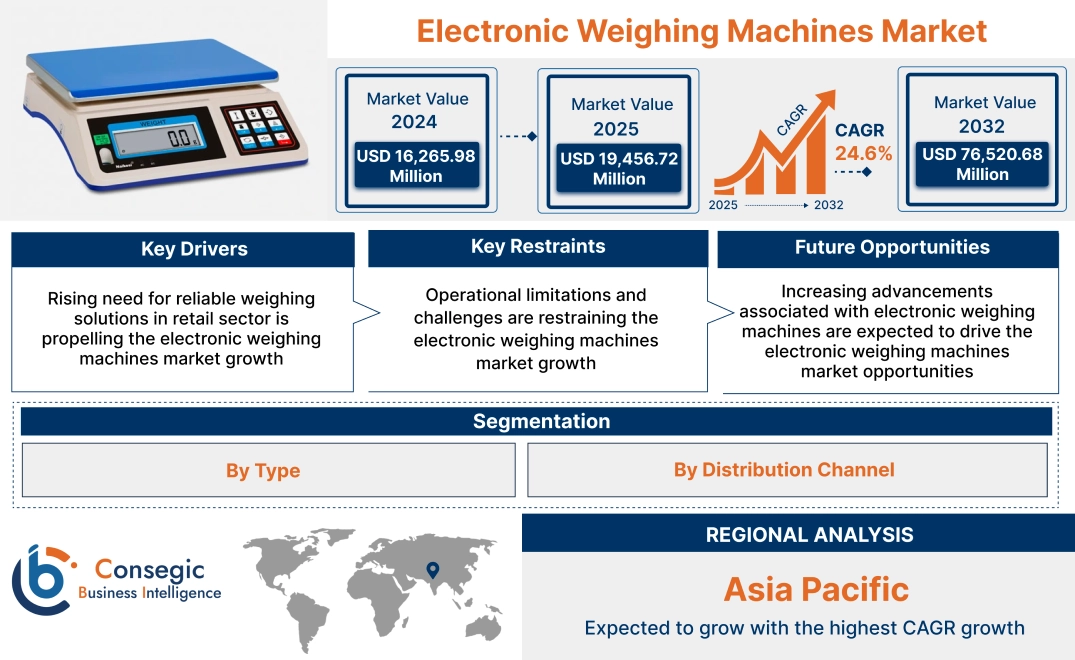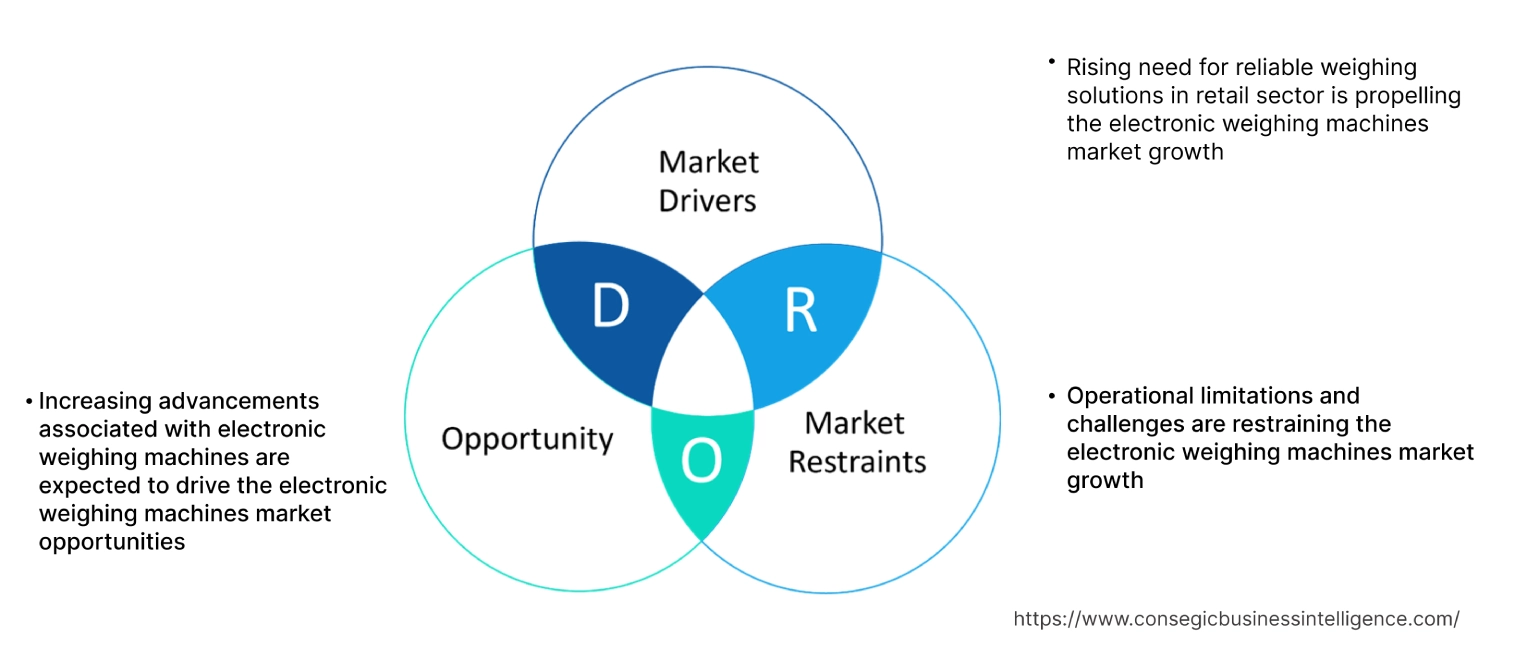Electronic Weighing Machines Market Size:
Electronic Weighing Machines Market size is estimated to reach over USD 7.88 Billion by 2032 from a value of USD 4.95 Billion in 2024 and is projected to grow by USD 5.16 Billion in 2025, growing at a CAGR of 6.5% from 2025 to 2032.
Electronic Weighing Machines Market Scope & Overview:
An electronic weighing machine, also known as electronic weighing scale, refers to a device that measures the weight of an object by utilizing electronic sensors and displays the weight digitally on a screen. Electronic weighing machines are available in various types such as retail scale, laboratory scale, gem & jewelry scale, health weighing scale, and kitchen scale, and others. Moreover, electronic weighing machine offers a range of benefits such as ease of utilization, high measurement precision, quick readings, compact design, and ease of portability among others.
How is AI Transforming the Electronic Weighing Machines Market?
AI is playing a crucial role in transforming the electronic weighing machines market, particularly for enhancing accuracy, automation, and predictive maintenance. AI-powered systems can analyze real-time data, improve precision, and integrate with other systems for optimized workflows. Moreover, AI-powered systems can adapt to dynamic environments, which ensures more accurate measurements.
Additionally, AI solutions can monitor the condition of weighing machines in real-time, identifying potential issues such as wear and tear before they lead to malfunctions. This predictive maintenance approach minimizes downtime and ensures that the machines are always functioning optimally. Therefore, the aforementioned factors are expected to positively impact the market growth in the upcoming years.
Electronic Weighing Machines Market Dynamics - (DRO) :
Key Drivers:
Rising need for reliable weighing solutions in retail sector is propelling the electronic weighing machines market growth
Electronic weighing scale is primarily used in retail sector for product weighing applications for facilitating accurate transactions and improving operational efficiency. In retail outlets such as grocery stores, supermarkets/hypermarkets, and others, electronic weighing scales are used for weighing bulk items including fruits, vegetables, and other food items. Moreover, several electronic weighing scales can also be integrated with POS (point of sale) systems for allowing seamless transactions. The utilization of electronic weighing scales helps in maintaining product consistency by ensuring that portions or packages meet specific weight requirements. The above characteristics of electronic weighing scales are primary determinants for increasing its application in retail sector.
- In March 2022, Lulu Group launched its new hypermarket in Dubai City Mall, as a part of the company’s expansion strategy. In addition, the Lulu Group further launched two new hypermarkets in Shamkha Mall in Abu Dhabi, and Dubai Investment Park.
Hence, the rising development of retail outlets is increasing the adoption of electronic scale as a cost-effective and reliable product weighing solution, in turn proliferating the electronic weighing machines market size.
Key Restraints:
Operational limitations and challenges are restraining the electronic weighing machines market growth
The implementation of electronic weighing machine is often associated with certain operational limitations and challenges, which are among the key factors restraining the market. The primary limitations of electronic weighing machine include calibration issues, battery issues, limited load range, fragility, and relatively higher price among others.
For instance, factors such as humidity levels, temperature fluctuations, along with wear and tear can impact calibration over time, in turn leading to inaccurate readings and compromising the reliability of weight measurements. Additionally, different models of electronic weighing scales have their own load range limitations and exceeding the maximum load range may result in inaccurate weighing readings. Further, the cost of electronic weighing machine is relatively higher, particularly for high-precision and large-load bearing models, as compared to traditional mechanical/analog weighing machines. Hence, aforementioned factors are hindering the electronic weighing machines market expansion.
Future Opportunities :
Increasing advancements associated with electronic weighing machines are expected to drive the electronic weighing machines market opportunities
Electronic weighing machine manufacturers are frequently investing in the development of new technologies associated with weighing machines to ensure its safe and effective utilization in consumer, commercial, and industrial applications among others. As a result, electronic weighing machine manufacturers are launching new products with updated features, which is creating lucrative aspects for market growth.
- For instance, Nitiraj Engineers Ltd. launched its NW model of electronic weighing scale, with a weighing capacity of 8/20 kilograms. The electronic weighing machine is integrated with a primary LCD display along with an additional LCD display at the backside of the machine, which ensures clear visibility from numerous angles and enhances user convenience. The machine is designed to cater to diverse weighing needs with superior reliability and precision.
Hence, as per the analysis, the rising advancements related to electronic weighing scales are projected to boost the electronic weighing machines market opportunities during the forecast period.
Electronic Weighing Machines Market Segmental Analysis :
By Type:
Based on type, the market is segmented into retail scale, laboratory scale, gem & jewelry scale, health weighing scale, kitchen scale, and others.
Trends in the type:
- Increasing trend in adoption of electronic retail scale in retail outlets for facilitating faster product weighing process and retail transactions is driving the electronic weighing machines market size.
- There is a rising trend towards utilization of health weighing scale in healthcare facilities such as hospitals and clinics, due to its several benefits including accurate and consistent measurements, comprehensive health monitoring, and others.
The retail scale segment accounted for a largest revenue share of 38.75% in the total electronic weighing machines market share in 2024.
- A retail weighing scale refers to a specialized device that is designed to accurately measure and display the weight of products in retail settings, specifically for items sold by weight such as vegetables, fruits, meat, and others.
- Electronic retail scales feature a digital display and are often integrated into POS systems to facilitate seamless transactions.
- For instance, Teraoka Seiko Co., Ltd. offers SM-6000 AI model of electronic retail scale in its product offerings. The SM-6000 AI integrates cognitive intelligence into retailers’ operations to deliver enhanced accuracy and recognition speed for rapid product identification and faster weighing process. The electronic retail scale offers high-speed performance and can be used to weigh products such as fruits, vegetables, dried fruits, nuts, and others.
- According to the electronic weighing machines market analysis, the rising advancements associated with electronic retail scale are driving the electronic weighing machines market trends.
Health weighing scale segment is anticipated to register a significant CAGR growth during the forecast period.
- Health weighing scales refer to specific electronic weighing machine that are designed to measure body weight and other health-related factors.
- Electronic health weighing scales are capable of providing precise weight measurements while certain models of electronic health weighing scales also offer body composition analysis such as muscle mass, body fat percentage, and water weight.
- Moreover, health weighing scales are often used in hospitals and clinics, to weigh babies and adults with a high level of precision and comfort.
- For instance, HealthSense offers Bluetooth BMI weight machine in its product offerings, which is designed to measure body weight. The electronic machine also features a LED display, body fat analyzer, and smart body composition scale with mobile app. It offers comprehensive body analysis, including 14 vital body composition readings with high accuracy.
- Thus, increasing advancements related to electronic health weighing scales are projected to boost the electronic weighing machines market during the forecast period.
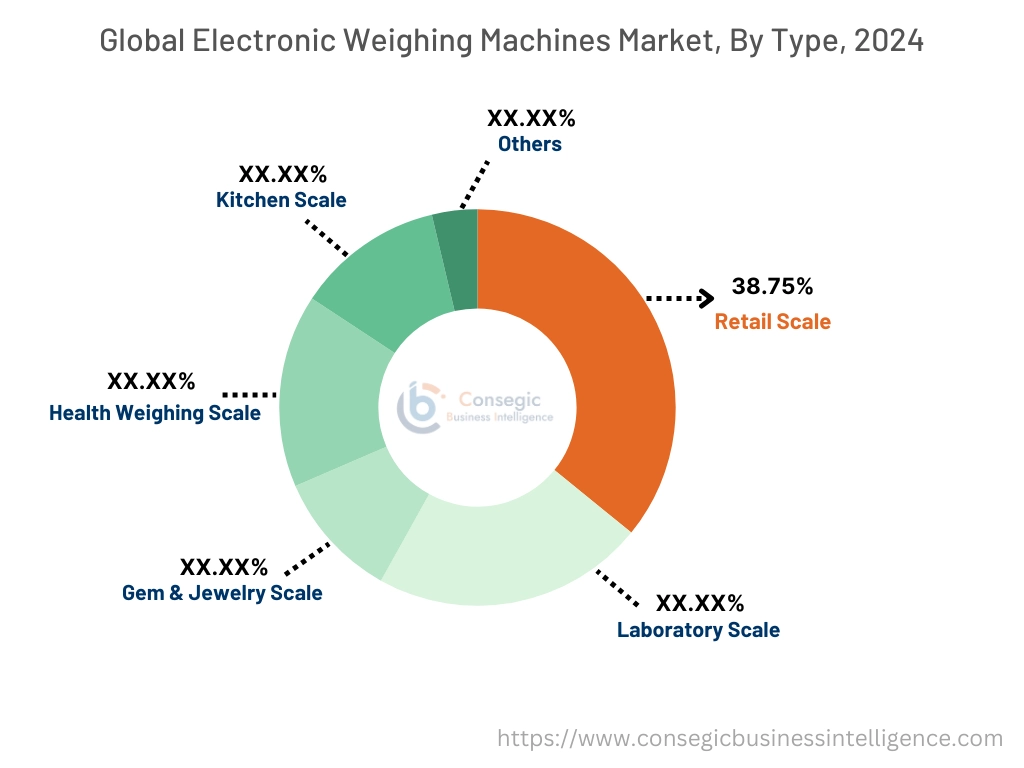
By Distribution Channel:
Based on the distribution channel, the market is segmented into online and offline.
Trends in the distribution channel:
- Factors including the availability of targeted advertising, competitive pricing, ease of utilization, along with reliable shipping and return policies are key trends driving the online distribution channel segment.
- Factors including strong customer base, higher credibility, and ease of customization as per the target market are primary trends for boosting the offline distribution channel segment.
Offline segment accounted for a substantial revenue share in the overall electronic weighing machines market share in 2024.
- Offline sales channel involves the distribution of electronic weighing machine from manufacturers to the end-users directly or indirectly through offline distributors such as hypermarkets/supermarkets, specialty stores, and others.
- Moreover, offline sales channels play a significant role in enhancing the product supply and fulfilling customer demands in the local markets, which is a prime factor in increasing its utilization for the distribution of electronic weighing machines.
- Additionally, offline distribution channel offers numerous benefits including higher credibility, strong customer base, and ease of customization as per the target market.
- Therefore, the above benefits of offline distribution channels are increasing its adoption for distribution of electronic weighing machine, thereby, propelling the market growth.
Online segment is anticipated to register fastest CAGR growth during the forecast period.
- Online distribution channel deploys a mode of distribution in which the manufacturers sell the products through the company websites or any other third-party e-commerce websites that are available on the internet.
- Online distribution channels offer various benefits including a quicker buying process, easy access to the products, and higher flexibility.
- Moreover, the availability of electronic weighing machine in online distribution channels allows quicker comparison of multiple products and prices and reduces overhead as compared to offline distribution channelss.
- For instance, Mettler-Toledo International Inc. is an electronic weighing scale manufacturer that offers a broad range of electronic weighing scales for direct online purchase through the company’s website. The company also offers its electronic weighing scales for online purchase through e-commerce platforms such as Amazon, eBay, and others.
- Therefore, the increasing availability of electronic weighing machine in online distribution channels is projected to drive the electronic weighing machines market during the forecast period.
Regional Analysis:
The regions covered are North America, Europe, Asia Pacific, the Middle East and Africa, and Latin America.
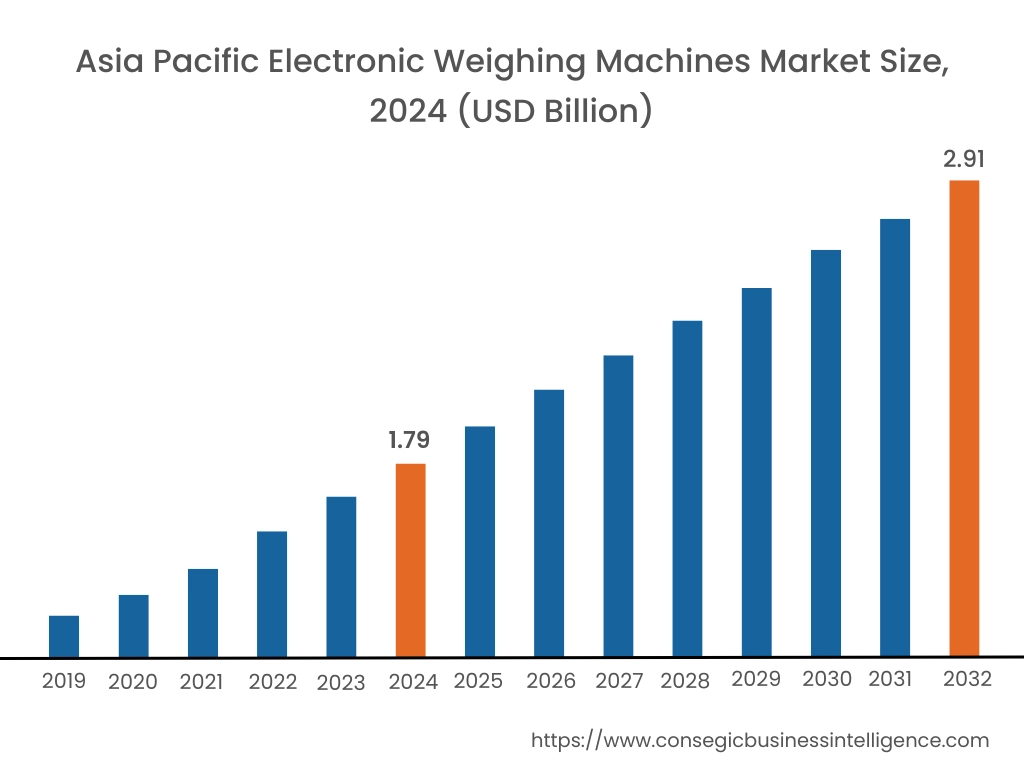
Asia Pacific region was valued at USD 1.79 Billion in 2024. Moreover, it is projected to grow by USD 1.87 Billion in 2025 and reach over USD 2.91 Billion by 2032. Out of this, China accounted for the maximum revenue share of 36.03%. As per the electronic weighing machines market analysis, the adoption of electronic weighing scales in the Asia-Pacific region is primarily driven by growing retail, healthcare, and other sectors. Additionally, the rising development of retail outlets such as hypermarkets/supermarkets, and grocery stores, along with increasing adoption of electronic weighing scales in retail outlets for product weighing applications are further accelerating the electronic weighing machines market expansion.
- For instance, in September 2023, Lulu Group launched its first hypermarket in the Mega Shopping Mall located in Hyderabad, India. The launch of the Lulu hypermarket in Hyderabad highlights the group’s progressive development in the Southern Indian states. The above factors are further propelling the market demand in the Asia-Pacific region.
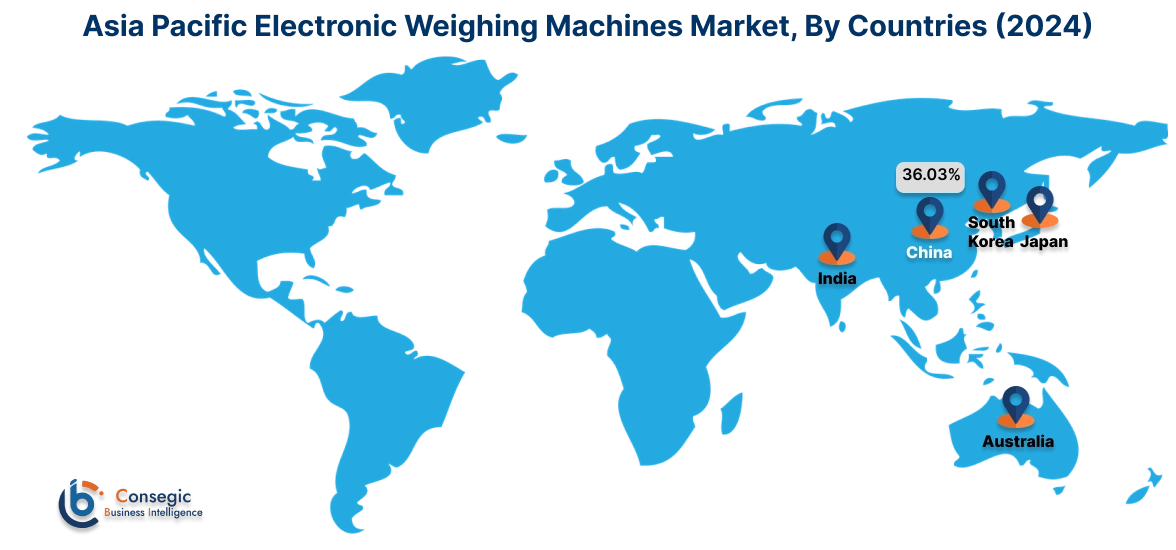
North America is estimated to reach over USD 2.13 Billion by 2032 from a value of USD 1.35 Billion in 2024 and is projected to grow by USD 1.40 Billion in 2025. In North America, the growth of electronic weighing machines industry is driven by rising investments in healthcare facilities, development of research and clinical laboratories, and others. Similarly, the rising retail sales is further contributing to the electronic weighing machines market demand.
- For instance, according to the U.S. Census Bureau (Department of Commerce), the e-commerce sales in the United States was valued at USD 289.20 billion during the first quarter of 2024, depicting an increase of 8.6% in comparison to USD 266.31 billion during the first quarter of 2023. The above factors are projected to drive the electronic weighing machines market trends in North America during the forecast period.
In addition, the regional analysis depicts that factors such as rising investment in retail outlets, development of commercial kitchen and restaurants, along with growing healthcare industry are driving the electronic weighing machines market demand in Europe. Furthermore, as per the market analysis, the market demand in Latin America, Middle East, and African regions is expected to grow at a considerable rate due to factors such as rising development of retail stores involving hypermarkets, department stores, and others along with increasing need for precise weighing machines in retail, healthcare, and other commercial applications.
Top Key Players and Market Share Insights:
The global electronic weighing machines market is highly competitive with major players providing products to the national and international markets. Key players are adopting several strategies in research and development (R&D), product innovation, and end-user launches to hold a strong position in the electronic weighing machines market. Key players in the electronic weighing machines industry include-
- A&D Company Limited (Japan)
- Mettler-Toledo International Inc. (U.S)
- Essae-Teraoka Pvt. Ltd. (India)
- Doran Scales Inc. (U.S)
- Fairbanks Scales Inc. (U.S)
- Kern & Sohn GmbH (Germany)
- BONSO Electronics International Inc. (China)
- Shimadzu Corporation (Japan)
- Adam Equipment Ltd (United Kingdom)
Electronic Weighing Machines Market Ecosystem:
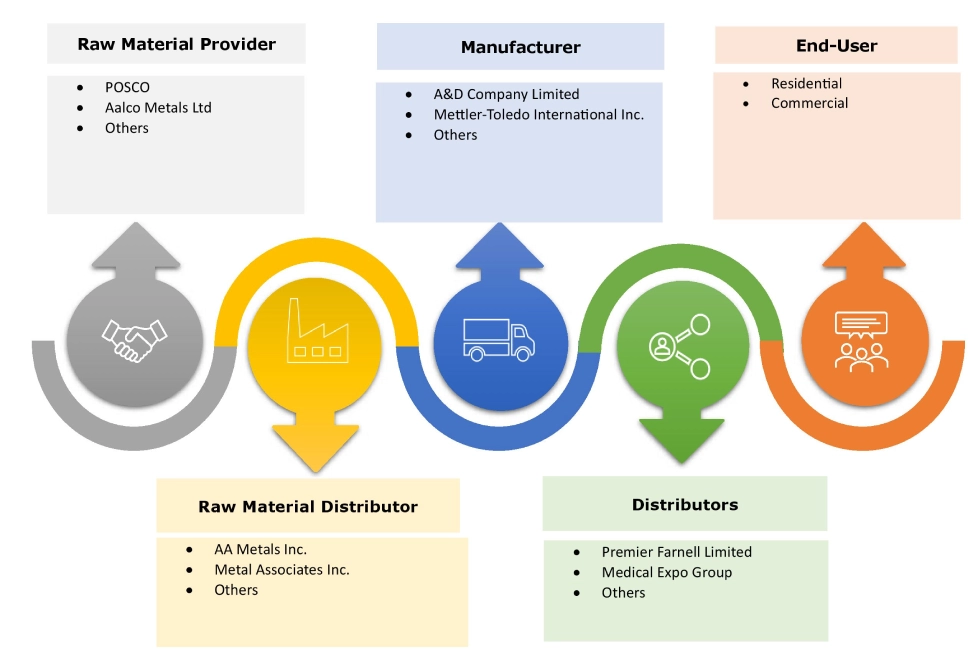
Recent Industry Developments :
Acquisition:
- In April 2023, Rice Lake Weighing Systems announced the acquisition of Healthweigh healthcare scales, which was a previous division of Shekel Scales. Healthweigh scales are mainly used in clinics, medical centers, hospitals, and others.
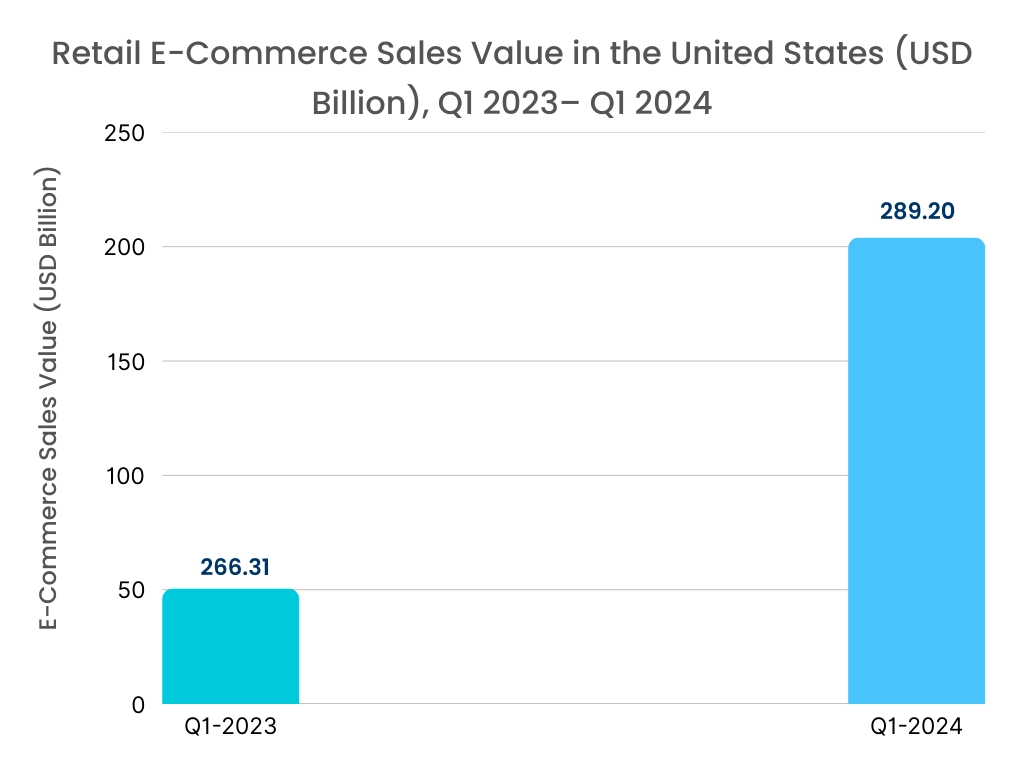
Electronic Weighing Machines Market Report Insights :
| Report Attributes | Report Details |
| Study Timeline | 2019-2032 |
| Market Size in 2032 | USD 7.88 Billion |
| CAGR (2025-2032) | 6.5% |
| By Type |
|
| By Distribution Channel |
|
| By Region |
|
| Key Players |
|
| North America | U.S. Canada Mexico |
| Europe | U.K. Germany France Spain Italy Russia Benelux Rest of Europe |
| APAC | China South Korea Japan India Australia ASEAN Rest of Asia-Pacific |
| Middle East and Africa | GCC Turkey South Africa Rest of MEA |
| LATAM | Brazil Argentina Chile Rest of LATAM |
| Report Coverage |
|
Key Questions Answered in the Report
How big is the electronic weighing machines market? +
The electronic weighing machines market was valued at USD 4.95 Billion in 2024 and is projected to grow to USD 7.88 Billion by 2032.
Which is the fastest-growing region in the electronic weighing machines market? +
Asia-Pacific is the region experiencing the most rapid growth in the electronic weighing machines market.
What specific segmentation details are covered in the electronic weighing machines report? +
The electronic weighing machines report includes specific segmentation details for type, distribution channel, and region.
Who are the major players in the electronic weighing machines market? +
The key participants in the electronic weighing machines market are A&D Company Limited (Japan), Mettler-Toledo International Inc. (U.S), Essae-Teraoka Pvt. Ltd. (India), Doran Scales Inc. (U.S), Fairbanks Scales Inc. (U.S), Kern & Sohn GmbH (Germany), BONSO Electronics International Inc. (China), Shimadzu Corporation (Japan), Adam Equipment Ltd (United Kingdom), Sartorius Group (Germany), and others.
